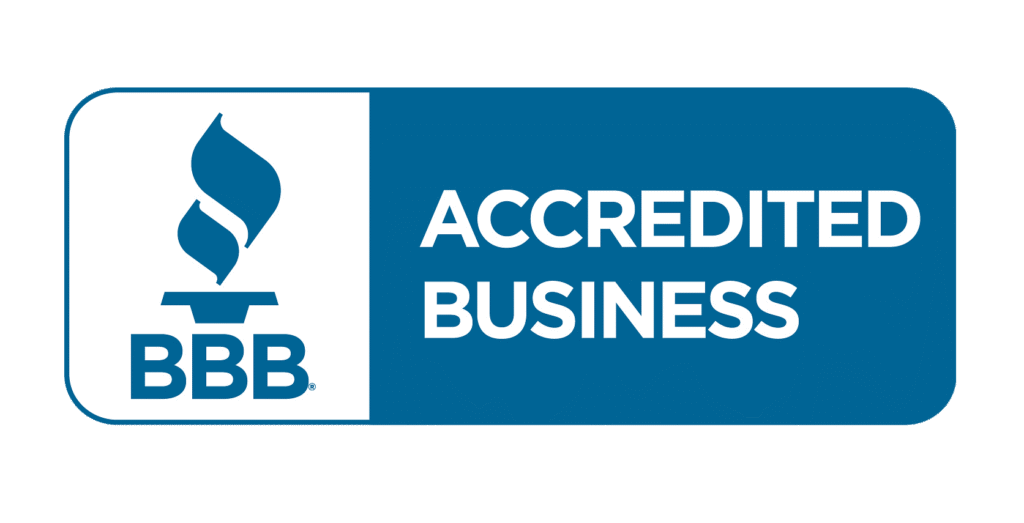Basement Flooding Richmond Hill
Basement Flooding Richmond Hill
Basement flooding in Richmond Hill is Canada’s most expensive climate challenge. Our city is only one meter above sea level. This makes it extremely vulnerable to flooding from heavy rain, sewer backups, and burst pipes.
Our team has protected homes from water damage in Richmond Hill for over 25 years. We do this through basement waterproofing services. Several warning signs point to potential flood risks – damp spots, musty odours, wall cracks, and high humidity levels. Richmond Hill’s flood risk tends to spike during seasonal changes, so taking preventive steps becomes crucial.
Waiting too long to address basement issues can lead to costly repairs. Foundation cracks, if left untreated, can become expensive to fix, especially as the damage worsens. Exterior basement waterproofing is also a significant investment, as it often involves excavation and structural work along the foundation.
Preventive solutions like sump pumps and backwater valves are much cheaper than fixing serious water damage. These upgrades do have costs, but they are usually cheaper than full waterproofing or foundation repairs. For homeowners in Richmond Hill, the total investment depends on the property’s size and the flood protection needed.

Contact Us Today
Homeowners Report Rising Basement Flooding in Richmond Hill
Richmond Hill residents are dealing with more basement flooding Richmond Hill as severe weather events continue to hit the area. Some residents in townhouses on Weldrick Drive East had to leave their homes. This was near Yonge Street and Major Mackenzie Drive East.
They left because of health and safety concerns. Water filled their basements during heavy rainfall. The Toronto and Region Conservation Authority has issued flood warnings for parts of the Greater Toronto Area. This includes Richmond Hill, as the situation is getting worse.
Recent rainfall patterns increase Richmond Flooding Risk
Climate change has changed how rain falls across York Region. The Toronto area’s temperature has gone up between 1 and 1.5 degrees over the last 30 years. This leads to more unpredictable weather, including flash floods and winter rainstorms.
Toronto broke its extreme daily rainfall record this January with 59 mm of rain. This created dangerous conditions because frozen ground can’t soak up water properly.
Past records show a worrying trend of worse rainfall events:
- May 2000 saw 68 mm of rain on average, leading to over 3,000 basement flooding complaints
- Rain poured down at 153 mm within just 3 hours on August 19, 2005, causing more than 4,100 basement flooding complaints
- July 8, 2013 brought over 100 mm of rain in 90 minutes, resulting in almost 4,800 basement flooding complaints
York Region has faced major rainfall and flooding events that damaged infrastructure and cost a lot to fix. In August 2005, heavy rain poured 175 mm on the Yonge and Steeles area in just three hours. Another severe storm on June 23, 2017, damaged many water and wastewater sites across the Region.
Experts now say York Region might see more flooding because of higher daily rainfall and more back-to-back rainy days. The risk of flooding increases in floodplain areas. It also rises in urban areas where water cannot soak in. This includes places where stormwater systems become too full.
Common complaints from residents in affected neighbourhoods
Residents in Richmond Hill have been vocal about sewage backing up during heavy rain. Several homeowners lost a lot when sewage water filled their basements during heavy rain on January 11. Some residents want the city to take responsibility for these sewer problems.
Richmond Hill residents often complain about:
- Sewage in basements, with one resident finding “12 inches of poop” after a backup
- Property damage that needs extensive cleanup and repairs
- Health risks from contaminated water exposure
- Poor municipal drainage systems
- Money losses insurance won’t cover
The city warns homeowners to be careful if they find water in their basements from backups because it might contain sewage. They should contact their insurance providers if flooding happens on private property.
Residents who live near roads can help by keeping catch basins near their driveways clear so water doesn’t pool on streets. Even well-maintained drainage systems can get overwhelmed during extreme storms.
These flooding events will likely cost more in the future. Insurance claims and economic losses from flooding could go up 20% to 30% by 2065. People with lower incomes may struggle more during floods. They have fewer resources and often live in poorer housing.
Experts Identify Key Signs of Basement Water Damage
Richmond Hill homeowners can save thousands in repair costs by spotting water damage early. The basement’s warning signs need immediate attention, especially in moisture-prone areas.
Musty odours and visible mold
Your basement’s persistent musty smell often signals moisture problems first. This distinct odor comes from mold growth and shows ongoing dampness. Mold usually appears as black, green, or white patches on wooden beams, drywall, carpeting, and stored items.
Mold needs moisture to grow, so its presence proves water has gotten in, even if you can’t see wet spots. These organisms love damp spaces and can make people sick, especially those with allergies or breathing problems. Anyone sensitive to mold might get stuffy noses, sore throats, coughs, wheezing, irritated eyes, and skin issues.
Cracks in foundation walls or floors
Foundation cracks don’t just happen – they point to problems that need fixing. Different crack types tell different stories:
- Shrinkage cracks appear in poured concrete foundations during curing. They’re not usually structural problems but tend to leak.
- Bulging cracks happen because expanding soil pushes against walls. They get worse and let water seep in easily.
- Settlement cracks appear when foundations sink unevenly. They’re wider at the top and can let both water and mud flow in if ignored.
Water pressure often pushes up against concrete floors and creates cracks. Water coming through these cracks ruins belongings and weakens the structure – the pressure can make foundation walls bow or fall.
Efflorescence and water stains
A white, chalky powder called efflorescence shows up on concrete surfaces. This mineral deposit isn’t harmful by itself. It forms when water moves through concrete walls and dissolves natural salts, leaving them behind as water dries. Its presence means water has gotten into your foundation.
Water stains look like dark, damp patches or streaks on walls and ceilings. Concrete or tiled floors might show darker spots or rings. New, wet patches that grow during rain mean active leaks. Dry, unchanged stains might show old moisture problems.
These stains often come with peeling paint, discoloured walls, or crumbling mortar – all signs that moisture keeps getting in.
Pooling water or damp patches
Standing water makes basement flooding Richmond Hill obvious. Water often leaks from showers, sinks, toilets, washing machines, water heaters, or broken pipes. It can also sneak in through cracks, wall-floor joints, or right through porous concrete.
Damp patches spell trouble even without obvious puddles. Some basement areas stay wetter than others. This dampness attracts mold and eventually breaks down the structure.
Constant moisture ruins stored items, rots wooden supports, and creates unhealthy spaces. High humidity, surface condensation, or deteriorating carpet and wood suggest water problems that need expert evaluation.
Waterproofing Companies Offer Range of Solutions
Richmond Hill’s local waterproofing companies have created specialized solutions to curb the rising basement flooding problems. Their services include preventive measures and emergency waterproofing Richmond Hill responses. This gives homeowners many options based on their needs and budget.
Interior vs. exterior waterproofing methods
Professional waterproofing contractors offer two main approaches to protect basements. The exterior waterproofing process requires excavation around the foundation, wall cleaning, crack repair, industrial-grade sealant application, and waterproof membrane installation. This method fully protects foundation walls by keeping water away. The costs range from CAD 139.34 to 418.01 per linear foot.
Interior waterproofing manages water after it enters the basement. This less invasive option installs drainage systems connected to sump pumps and costs between CAD 97.54-487.68 per linear foot. While more economical, these solutions let water touch foundation walls before redirecting it.
Sump pump and backwater valve installations
Sump pump installation Richmond Hill systems serve as a crucial defence against basement flooding. The installation process includes making a drainage channel and sump pit by using a jackhammer.
It also involves installing sloped drain pipes, setting up the pump, and connecting an outside drain line. Each pump costs CAD 780.28-4876.76, and battery backups protect against power outages.
Backwater valves protect homes from sewage backups during heavy rainfall. These devices automatically close if sewage tries to flow backward. Richmond Hill residents can get these valves for CAD 1393.36-4180.08. Municipal subsidies might cover up to 80% of costs, with a maximum of CAD 1741.70.
Foundation crack repair and weeping tile systems
Water enters through foundation cracks that expand during freeze-thaw cycles. Professional repairs include:
- Epoxy injections that seal cracks from inside
- Exterior repairs using rubberized urethane with drainage boards
- Floor crack remediation with weeping tile installation
Emergency waterproofing services
Our company provides 24/7 emergency waterproofing services for unexpected water problems. They handle water extraction, basement restoration, mold remediation, and immediate foundation crack repairs. The teams use specialized equipment like negative air pressure systems, industrial dehumidifiers, and thermal imaging to find hidden moisture.
How Much Does Basement Waterproofing Cost in Richmond Hill?
Richmond Hill homeowners need to know the financial investment needed for basement waterproofing to make smart decisions. The cost varies based on many factors, from your property’s features to the waterproofing methods you choose.
Cost Breakdown by Service Type
Interior waterproofing is typically more budget-friendly compared to exterior options. It focuses on managing water that has already entered your basement. This makes it a good choice for many homeowners with small moisture problems.
Exterior waterproofing is a larger investment but offers more robust protection by stopping water before it reaches your foundation. While it’s more costly, it’s also more comprehensive—especially useful for homes with recurring water intrusion or structural concerns.
Here’s what you might expect for common waterproofing services:
- Foundation crack repair costs depend on how wide and deep the crack is. Larger or more complex repairs need more labour and materials.
- Sump pump installation pricing varies based on the type of pump and the need for a new pit. Basic installations are cheaper, while full setups with backup systems and new infrastructure cost more.
- The expenses for window well installation depend on the well’s size, depth, and whether you add drainage systems.
- Backwater valve installation costs depend on pipe depth and placement location.
Key Factors That Affect Pricing
- Foundation depth: Deeper foundations demand more excavation and materials, which increases costs—especially for exterior waterproofing.
- Accessibility: Hard-to-reach areas or obstacles like decks, patios, and landscaping can increase labor time and costs.
- Extent of damage: Small problems may just need crack sealing. However, serious Richmond Hill water damage might need a complete waterproofing job, which can greatly raise the cost.
Typical Price Ranges for Waterproofing
For most homes in Richmond Hill, basement waterproofing costs can be moderate to high. The seriousness of the problem and the needed solution determine this.
- Interior solutions tend to start at the lower end of the spectrum, especially for smaller basements or localized repairs.
- Exterior waterproofing usually comes with a higher price tag because of excavation and structural work.
Larger basements or more extensive water issues will naturally increase the final price. Waterproofing costs can vary a lot per square foot. However, smaller jobs can still be affordable for early help.
Why Quality Waterproofing Is Worth It
While the upfront cost of waterproofing might seem high, it’s a smart long-term investment. Preventative work can save thousands in potential flood damage, mold removal, and structural repairs down the line.
Residents Share Positive Experiences with Local Contractors
Local waterproofing contractors have become trusted partners for Richmond Hill homeowners who face basement flooding areas. Their success stories help others who need the same services.
Customer testimonials highlight professionalism
“The team ensured everything was correctly sealed and effectively repaired the leak. Even with intense downpour, my basement is now totally dry,” reports one Richmond Hill resident.
Many reviews share this view, with another stating, “Professional crew, timely service, and no more leaks. Great service! Our basement is dry even after heavy rains”.
The best contractors earn praise because they:
- Show up right after the first call
- Get the job done on time as promised
- Make sure the work area stays clean
- Take time to explain what they’re doing
“They came right after we called them about the flooding. They worked hard to stop the water damage,” said a customer who was away from home.
Importance of warranties and post-service support
Richmond Hill residents consider lifetime warranties a key factor when choosing waterproofing contractors. Local companies’ warranties last up to 25 years, which makes homeowners feel secure about their investment.
One company says, “We offer a lifetime warranty because we trust our basement waterproofing system and our skilled workers.”
Experts remind us that a warranty’s value depends on the company backing it. Warranties work more like insurance policies than guarantees – they’re promises to fix problems if they come up.
Why trust and communication matter in flood repair
Basement floods put homeowners under a lot of stress. The contractors who keep communication lines open throughout repairs get the best reviews.
“Property and business owners value a clear approach to restoration. They want to involve themselves and stay informed at every step.
Good contractors make it a point to explain the work needed, set realistic timelines, and give regular updates. This open approach builds trust during what many call an extremely stressful time.
Protecting Your Richmond Hill Home from Basement Flooding
Basement flooding is one of the biggest climate-related challenges Richmond Hill homeowners face today. This piece explores how changing weather patterns have dramatically increased flooding risks in our community. Heavy rainfall has become more frequent and severe, which overwhelms municipal drainage systems and causes extensive property damage.
Your home might show warning signs of water damage that need quick attention. Be alert for musty smells, visible mold, cracks in the foundation, white powdery spots, and wet areas. These signs need quick action. Quick identification of these problems can save thousands in repair costs.
Your waterproofing options will vary based on your needs and budget. Interior methods help manage water after it gets in, while exterior approaches stop it from entering at all. Using sump pumps, backwater valves, foundation repairs, and weeping tile systems can help solve specific problems. Emergency services stand ready to help with unexpected flooding incidents.
Cost is a vital factor in making the right choice. Basic interior waterproofing costs start at CAD 96 for each linear foot. Complete exterior solutions for badly damaged homes can go over CAD 40,000. All the same, these investments look small when matched against repair costs after major flooding.
Client experiences show why picking the right contractor matters so much. The best Richmond Hill waterproofing companies offer professional service, clear communication, detailed explanations, and solid warranties. So homeowners should thoroughly research potential contractors before making their pick.
The right approach to basement waterproofing can substantially reduce your flooding risks. Climate change will continue to change York Region’s rainfall patterns. However, good waterproofing can protect your home and belongings from water damage.
Prevention costs less than emergency repairs. This makes basement waterproofing a smart investment for homeowners in Richmond Hill.
Dealing with unexpected water damage? Our expert team specializes in basement flood cleanup in Richmond Hill, providing fast, reliable service to protect your home from further damage. We provide complete flood cleanup in Richmond Hill. Whether it’s a burst pipe or a heavy storm, we help restore your property and peace of mind.
FAQs for Basement Flooding in Richmond Hill
Q1. What are the main causes of basement flooding in Richmond Hill?
Heavy rainfall, sewer backups, and burst pipes primarily cause basement flooding in Richmond Hill. The city’s low elevation and changing climate patterns have increased the risk of flooding events in recent years.
Q2. How much does basement waterproofing typically cost in Richmond Hill?
The cost of basement waterproofing in Richmond Hill depends on a few factors. These include the method used and how much of water damage there is.
Homeowners usually find interior waterproofing cheaper. The best method for handling water that has already entered the basement.
Exterior waterproofing typically costs more but offers stronger protection by stopping water at the source. Most homeowners can expect the total cost to change. This depends on the size of the basement, the foundation’s condition, and the job’s complexity.
Q3. What are some early signs of potential basement water damage in Richmond Hill?
Early signs of water damage in a basement include musty smells and visible mold. You may see cracks in the foundation walls or floors. Look for white chalky deposits, called efflorescence, on concrete surfaces. Also, check for damp patches or water stains on walls and floors.
Q4. Are there any subsidies available for basement flood repair Richmond Hill?
Yes, Richmond Hill offers subsidy programs to help homeowners with flood prevention upgrades. Eligible property owners may receive financial assistance for installing approved measures such as backwater valves or sump pumps.
These programs can greatly lower your out-of-pocket costs. They can cover a large part of the installation cost, sometimes even most of it. To qualify, you’ll need to meet certain criteria and complete the work through licensed contractors.
Q5. How important are warranties when choosing a waterproofing contractor?
Warranties are crucial when selecting a waterproofing contractor. Many reputable companies in Richmond Hill offer long-term or lifetime warranties, providing homeowners with confidence in their investment. However, it’s important to remember that a warranty is only as valuable as the company standing behind it.
How It
Works
Enter Details
Please provide as much information as possible about your emergency service and answer a few questions. Within minutes, we will be able to provide you with an expert. It’s easy and quick!
Book Assessment
Hire Us
It’s crucial to realize that several things influence the ultimate cost when estimating the cost of water damage repair. To restore your property to its pre-damage state, CPR24 Restoration is here to help you at every stage of the procedure. Let’s examine the main factors that affect the cost of water damage restoration in more detail.
- Area
One of the most important elements influencing restoration costs is the extent and size of the water-damaged region. Repair expenses increase with the size of the impacted region, whether it’s a minor leak or widespread flooding. The total cost of water damage restoration rises as larger areas require more work, supplies, and time to repair.
- Location
Due to geographical variations in labour costs, material availability, and situational urgency, geographic location might affect the cost of water damage repair. Because of the expense of living and logistics, properties in urban regions may have greater service fees than those in rural locations.
- What category is the water?
The type of water that caused the damage is crucial. Three criteria are commonly used to classify water damage:
Since Category 1 (Clean Water) uses water from clean sources like burst pipes or dripping faucets, it is the least expensive to clean.
Water from appliances or potentially contaminated sources, such as washing machines, sump pumps, and dishwashers, falls under Category 2 (Grey Water).
Category 3 (Black Water): This type of water, which originates from contaminated sources such as sewage, floodwater, or standing water in basements, is the most dangerous and costly to clean up. The cost is increased by the need for specific cleaning and sanitization for Category 3 water damage.
- Is there any water left?
Before beginning any additional repairs, any remaining water in the impacted areas must be removed. Because specialists need to use specialized equipment, including industrial-grade pumps and dehumidifiers, to extract the water and completely dry out the damaged areas, standing water might result in higher repair expenses. Long-term untreated water can encourage the formation of mold, which may necessitate more remediation and raise repair expenses.
- Other elements are present
The following additional variables could affect the price of restoring water damage:
Structural Damage: The walls, floors, and ceilings must be replaced or restored if water has weakened their structural integrity.
Growth of Mold and Mildew: Mold and mildew can appear if water damage is not addressed for an extended length of time. The overall cost of repair may rise dramatically with professional mold removal.
Materials Affected: If damaged beyond repair, some materials, like insulation, drywall, and hardwood floors, may need to be replaced completely. The cost of repairs increases with the cost of the materials.
Labour Intensity: Labour expenses will be impacted by the intricacy of the repair procedure, which may include demolition, cleaning, drying, and rebuilding.
- Emergency Services
Unexpected water damage can occasionally occur, necessitating prompt emergency water extraction and remediation services. Since emergency services must be provided quickly to stop additional damage, such the growth of mold or long-term structural problems, they are frequently more expensive.
Your property may suffer major repercussions from water damage, including mold growth and structural problems. To help you take preventative action and deal with issues before they become worse, CPR24 Restoration is here to explain the most typical causes of water damage. Let’s examine the main reasons why water damage occurs and how they may affect your house or place of business.
- Severe weather
One of the main sources of water damage is severe weather, such as hurricanes, heavy rain, or snow. Drainage systems can be swiftly overloaded by water, resulting in roof leaks, basement flooding, and even wall and floor damage. Extreme weather-related water damage is especially likely to occur in coastal locations or areas that get high rainfall.
- Clogged gutters
Gutter blockages caused by leaves, mud, and branches make it difficult for them to efficiently redirect water away from your house. This may cause gutters to overflow, allowing water to infiltrate into your property’s foundation and walls. Water seeping into your home from clogged gutters can eventually seriously harm your roof and even the interior of your house.
- Leaking pipes
Leaking or ruptured pipes are among the most frequent and frequently overlooked causes of water damage. Anywhere in your house, including behind walls, in basements, and beneath sinks, leaking pipes might appear. If a little leak is not fixed, it might cause significant water damage. In addition to age, corrosion, and inadequate installation, cold temperatures in the winter are also frequent causes of pipe leaks.
- Washing machine leak
Another common cause of water damage in houses is washing machines. Large volumes of water can pour into your floor from a malfunctioning hose, a worn-out gasket, or an overloaded machine, damaging nearby walls, hardwood floors, and carpets. To stop leaks, it’s critical to routinely check the hoses and connections on your washing machine.
- Condensation from AC
One prevalent yet obscure source of water damage is condensation from air conditioners. Improper drainage of your air conditioner can lead to the buildup of moisture and damage to adjacent walls, ceilings, and floors. This can eventually cause mould and mildew to grow and have a major impact on the air quality in your house. Preventing this problem requires routine cleaning and maintenance of your air conditioning system.
- Blocked drains
Water backup from clogged or blocked drains in sinks, showers, or toilets can harm ceilings and floors. Slow water drainage from blocked drains can cause standing water that could overflow and seep into floors and walls. To stop water buildup and any water damage, it’s critical to routinely remove any blockages in the drain.
- Malfunctioning sprinkler systems
Although automatic sprinkler systems are meant to hydrate your grass, they can cause serious water damage if they don’t work properly. Inadequate water distribution or sprinkler system leaks can cause an excessive amount of moisture to accumulate around your home’s foundation, which can lead to mould growth, wet basements, and foundation fractures. Costly damage to your sprinkler system can be avoided with routine testing and maintenance.
- Leaking water heater
If it starts to leak, your water heater is another typical cause of water damage. The surrounding area may flood due to a leaking water heater, causing damage to the walls and floors. Age, rust, and sediment accumulation can erode the water heater over time, raising the possibility of a leak. Significant damage from a broken water heater can be avoided with quick repairs and routine inspections.
- Roof Leaks
Water infiltration can occur from a roof that is old or broken, particularly during storms or periods of intense precipitation. Water seeping into your attic, walls, and ceilings due to roof leaks can result in mould growth, structural damage, and electrical risks. It’s critical to conduct routine roof inspections and fix any gaps, cracks, or missing shingles before they cause serious water damage.
- Sewer Backup
One of the most expensive and painful types of water damage is a sewage backlog. Basements and lower-level rooms may flood as a result of wastewater flowing back into your house due to clogged or damaged sewer lines. In order to reduce health risks, this kind of water damage is classified as black water (Category 3), which is extremely contaminated and necessitates professional cleanup and remediation.
There’s no denying that water damage can pose a number of serious health risks. If your home has been flooded with filthy water, you should be very concerned. Flood damage water is divided into three categories:
- Category 1: “Clean” water from hygienic sources, such as your home’s plumbing. Although this water has not yet been utilized in your home, it is still fresh and pure.
- Category 2: “Grey” water from outside your home, such as seepage from the earth into your basement and post-use water from home appliances.
- Category 3: Unsanitary sources of “black” water that may contain human or animal waste. This water comprises sewage-contaminated water as well as floodwater from rivers and lakes. This water should be treated as though it were poisonous.
If you’re dealing with Category 3 water, you should take a step back and ask for help right away. This water is potentially hazardous to touch or breathe, and anything it has come into contact with must is disposed of or thoroughly cleaned and sterilized. A skilled water damage restoration business will be able to tell you whether or not your contaminated possessions may be saved.
Floodwaters from outside your home can bring a wide range of germs, poisons, mold, and even fungi, even if they don’t contain raw sewage. If your home was flooded with anything other than clean tap water, your family could be exposed to these contaminants, necessitating sterilization operations.
Mold development is the most well-known threat of water damage. Mold spores might start to grow as soon as 24 hours following water damage. Mold has been linked to a variety of health conditions, ranging from allergy-like symptoms to major respiratory troubles and even neurological damage in some people. Mold isn’t something you want to deal with, so if you suspect mold is forming as a consequence of water damage or water that has been left sitting for more than 24 hours, the best thing you can do is hire a mold remediation company.
These toxins are obviously not things you want to sit around and multiply in your home, so dealing with water damage as soon as possible is critical. Water damage, on the other hand, isn’t just a health hazard in the form of biohazards; it can also undermine your home’s structure and components.
Backups of sewage are a nightmare. We don’t have to tell you that, though. If you’re having one, you probably have only one question on your mind. So, what should I do now? It’s easy to feel helpless in the face of the situation. It’s possible that your basement or living space is flooded. Keep calm, remember that things can be fixed, and continue reading.
If sewage backup is a recurring problem in your home, consult a plumber for a diagnosis and treatment plan. Even if the issue is not on your property, enlisting the help of a plumber can typically expedite the problem’s resolution. A plumber can frequently give evidence that the sewer problem is not on your property.
- Power down to the affected area.
- Stop wasting water.
- Put on your personal protection equipment.
- For insurance purposes, take images or videos of the affected area.
- Any damaged property should be disposed of.
- Using a shop vac, remove any standing wastewater or sewage.
- Bleach solution to mop
- Any wood or organic surfaces should be sprayed with a mold protection solution.
- Make use of a dehumidifier.
Sewage Backup and Flood Prevention
- Inspection of the Plumbing System on an Annual Basis
- Cleaning of Drains
- Installation of a backwater valve
Water damage in your home can be caused by a variety of factors. It could be the result of a plumbing issue, an overflowing bath, or floods caused by inclement weather. Whatever the cause of the damage, it’s critical to be aware of the warning signals and not to dismiss them when you see them. Pretending it isn’t there could result in further harm and troubles for your home and family. Here’s why, if you notice water damage, you shouldn’t disregard it.
- Structural Damage
- Mold and Mildew
- Health Problems
- Bad Smells
- Stains
- Increased Repair Costs
- Electrical Damage
- Water Damage Could Indicate a Bigger Problem
- Your Water Bills Might Be Too High
- It Can Worsen Quicker Than You Think
- Your Home’s Appearance Suffers
- There Could Be a Lot of Unseen Damage
- Your Insurance Could Be Affected
- Flooding Can Cause Foundation Damage
- Fixing Water Damage Prepares You For Future Problems
Water damage requires immediate action. As soon as you notice a leak, flood, or overflow in your commercial and residential property, you should contact an emergency restoration company for water damage removal.
As you await the quick arrival of the IICRC-certified restoration team at CPR24 Restoration, you should turn off any electrical breakers in the affected area, and stay away from hazards.
Any furniture that has been affected or damaged, such as carpet, couches, tables, flooring, and other building materials, should be removed promptly. Dispose of any contaminated materials in a safe manner. This will help minimize the need for mold removal.
Now that the area is clear, it is time to extract the water and dry the affected areas with the appropriate equipment. While a dehumidifier may be accessible to the general public, it may be tough to find pumps and blower fans that are readily available. By contacting CPR24 Restoration promptly, our team will arrive on-site in a timely manner to manage the water damage cleanup process, mold removal if necessary, and even reconstruction.
Secondary water damage is the type of damage that can occur as a result of floods and leaks such as mold and electrical issues. These are a noteworthy issue for property owners, particularly if it isn’t tended to in a timely manner. Secondary water damage can cause the development of mold growth, oxidized metal, decayed wood, and bowing floorboards.
How Does Secondary Water Damage Happen
After water damage occurs in a home, mold growth soon follows. Within two days, the first signs of mold growth can become apparent. If not addressed promptly, mold can spread extensively. Mold spores can cause respiratory problems, allergies, and other health issues for occupants. To remove the mold thoroughly and protect against future growth, homeowners should consult with the mold removal pros at CPR24 Restorations. Our professionals are able to eliminate any existing mold safely and take the necessary steps to prevent further mold from developing. Our assistance ensures that water damage will not lead to larger health concerns down the road.
Oxidized metal is another kind of secondary water damage that can develop. If metal is exposed to moisture for a prolonged time, it will start to rust, weakening the material and potentially causing deterioration. Decayed wood is also a frequent problem that can surface after water damage has struck. It can undermine the integrity of a structure and generate an unsafe condition for occupants.
Warped and uneven floorboards can develop as another consequence of secondary water damage. If water infiltrates between floorboards, it has the potential to distort their shape and cause them to lift, posing stumbling risks and allowing further destruction to take place if not handled without delay.
Protect Your Property with Water Damage Restoration
It’s important to address secondary water damage promptly to prevent further damage and potential health hazards. Homeowners should consult with the professionals at CPR24 Restorations, we can help you identify and address these issues effectively and safely. By taking prompt action, homeowners can minimize the damage and ensure that their homes remain safe and healthy places to live.
24/7 Basement Flooding Richmond Hill
Contact Us Today


Frequently Asked Questions
We Partner With All Insurance Companies







Why Choose Us

Appointments

Fast Service

Experience

Certified Mold Removal & Remediation Company

Workmanship

Approved Pricing
Contact Us Now
What Our Clients Are Saying
Trustindex verifies that the original source of the review is Google. We consider ourselves fortunate to have happened upon CPR24 Restoration via a Google search when we were in need of remediation work for a mold issue in our basement. The glowing reviews prompted us to call and we quickly became aware of why this company has met with so much success. As soon as Chris arrived we could see his mind turn to problem-solving mode. He assessed our situation, outlined the work that needed to be done and most importantly provided reassurances that his team could get right on it. It gave us peace of mind to know that CPR24 could not only deal with the mold issue but also put everything back together and refresh all the areas involved. Not having to go in search of renovation contractors was particularly important to us as we had time constraints to get the work done. We were impressed by the efficiency of the trades and the respect shown to us and our home by all the workers involved. And it was nice to see some of the same faces throughout the project which provided continuity for us. It was evident that these individuals took pride in their work and were committed to a job well done. We thank CPR24 for its professionalism and timely service and certainly recommend it for your restoration needs.Trustindex verifies that the original source of the review is Google. I had a flood in my basement and I called right away to get help. The team was extremely professional and efficient. They were with me every step of the way, and answered all the questions that I had. This is by far one of the most professional companies I have ever had the pleasure of dealing with. I would recommend them to everyone that I know because they really care about their work and they treat the customer with the upmost importance and respectTrustindex verifies that the original source of the review is Google. Outstanding service from CPR Restoration! They were fast, professional, and took care of everything with great attention to detail. Highly recommend for any restoration needs.Trustindex verifies that the original source of the review is Google. Recently found mold in my attic, called CPR24 Restoration after finding them on the first page of Google. They picked up the phone straight away and gave me a whole detailed rundown on the steps that would need to be taken in my attic. They were very professional and efficient throughout the entire process. Overall excellent mold removal and remediation company with quick and professional service. Beyond satisfied with the results! Will be recommending to my friends&family.Trustindex verifies that the original source of the review is Google. I called CPR24 Restoration after a condo water leak I recently experienced. After searching flood companies on Google and countless calls with other companies, CPR24 Restoration was the one that stood out to me most and was honestly most helpful throughout the entire process. Chris was quick to answer the phone, and they were the only company that gave me a clear outline of the water damage and flooding process. He met with me the same day of my phone call and was always very punctual. The team was very patient with me, they helped answer all of my many questions and were always very quick to respond if I had any issues throughout the week. I really appreciated how supportive Chris and his team were throughout the entire process. Highly recommend CPR24 Restoration!Trustindex verifies that the original source of the review is Google. I had an amazing experience with CPR24 Restoration. I had mold in my basement and they were very quick and easy. Great customer service, Highly recommend.Trustindex verifies that the original source of the review is Google. My sister recommended CPR24 Restoration for flood damage and mold removal. I started to smell mold in my basement last week, I called Chris and he was there within the hour. I am so relieved I called him when I did because there were signs of toxic black mold which their team removed very efficiently. Staff was friendly and very punctual. Overall 10/10 experience!Trustindex verifies that the original source of the review is Google. Recently I had mold problem in my basement Chris from CPR Restoration came with his professional team and took care of the situation I recommended them to all my friends great company to callTrustindex verifies that the original source of the review is Google. I want to share my wonderful experience with CPR24 Restoration whom I highly recommend to others looking for mold removal companies. I called CPR24 Restoration for the toxic black mold I had in my basement, after finding them on Google. They were always on time, responded quick to my emails, and made me feel very secure throughout the whole process. Their team was very efficient but extremely careful at the same time. So professional and will definitely be keeping their contact for the future.Trustindex verifies that the original source of the review is Google. I was so stressed out though, but Chris and his team are well organised, skilled, well mannered and very friendly. Anytime I called him, he replied. His main focus on client’s satisfaction. He is a very sincere person. Thanks very much to CPR24.







